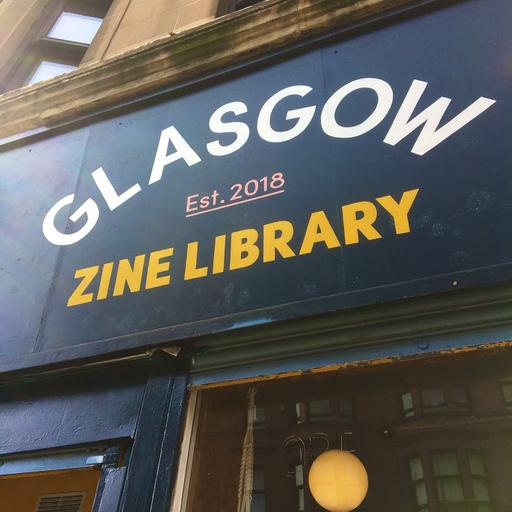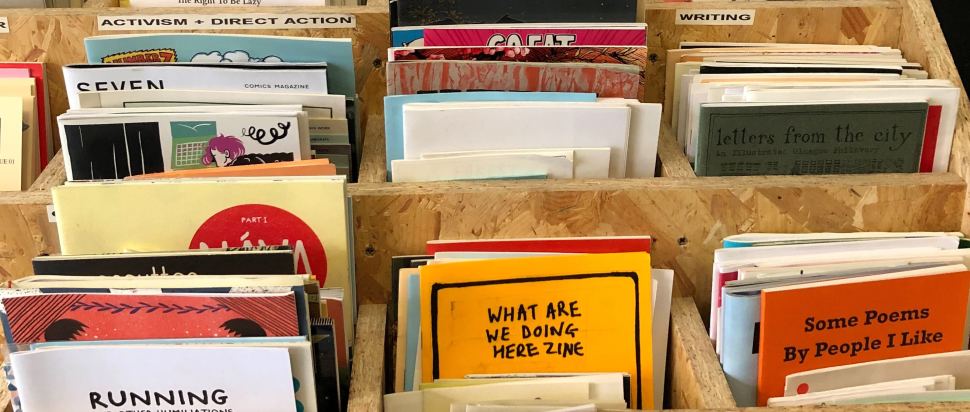Do It Yourself: Grassroots Art & Glasgow Zine Library
We chat with LD, the director of Glasgow Zine Library, about the radical potential of zine-making, and why Glasgow is the perfect city to do it
The Skinny: Tell me about how Glasgow Zine Library got started?
LD: We waded into the whole thing relatively slowly: a small zine fair at the Old Hairdresser's became a zine fair plus a small programme of events, until we outgrew our venue and moved to the CCA. Over the years, we collected about 300 zines from the fair; after doing a few events where we had our collection on display for people to read, we decided to start a library.
What is it about zines that drew you to them? How do they intersect with the ethos of community and radical practice that the library has built itself around?
I found my footing in a small town in Illinois that had DIY cassette labels, zines made in people’s living rooms, and a general drive to put something out into the world regardless of how many people might see it. DIY was the glue that held us together. When I moved to Glasgow, I brought a piece of that town with me.
What drew me to zines as a teen was the non-skilled point of entry. I didn’t need to be able to draw or to have written the great American novel to be able to put something down on paper. For me, that’s the crux of this work: to allow people to try something new in a supportive environment. Zines are a unique medium because they’re very open and accessible; we use that as the foundation of everything that we do, from how people can read our collection to how they can take part in our events.
Is there a particular Scottish radical history in zines that you’re drawing on?
What we really drew on when we started the festival and eventually the library was the history of DIY spaces in Glasgow. I’d read Dr Sarah Lowndes’ book Social Sculpture, which details the rise of artist-led, autonomous arts initiatives in the city, and I knew that I wanted to become part of that. The music scene, artist-led spaces, indie publishing and bookshops; all of these paved the way for organisations like ours to jump in and roll up our sleeves.
What advice do you have for people who want to get into zine-making or this kind of radical community-building?
I think anyone interested in making zines shouldn’t fear the blank page. Doing the first one of anything can be daunting, but zines are a forgiving medium. If you’re looking for inspiration, there are zine libraries, fests and collections that will show you the breadth of what’s possible. If you need some instruction, there are workshops and online tutorials.
In terms of community work, it can be difficult: it’s often bureaucratic, finding-pennies-in-the-couch-cushions kind of work. At GZL, we talk a lot about unsexy jobs like liaising garbage pickup with the council. It doesn’t all get to be seeing people’s faces light up as they turn their idea into a physical thing, but every task is vital to keeping things going. We’ve learned a lot by doing, and also by having a team of people with varied experience and a broad range of knowledge. I think more than anything else, you have to love doing it.
What is it about Glasgow that you think lends itself to this kind of radical work?
Its location, the amount of artists who settle here, its history, and its position as a huge cultural city outwith London create the perfect conditions for radical work. Glasgow is a place where things feel possible, and that’s very special – it’s a city with a long history of collective action, community work, and a huge drive to create.

Grassroots Arts in Glasgow
Glasgow is a city of activists. Here are some of the other organisations, art spaces, and grassroots initiatives building social and creative communities in the city.
Dardishi
Dardishi is an arts project dedicated to cultural work created by Arab and North African women and gender minorities. Co-founded and run by Glasgow-based Samar Ziadat, Dardishi is perhaps best known for its annual festival featuring screenings, workshops, and performance at the CCA, as well as its beautifully curated and produced zines and year-round events programme.
Kinning Park Complex
The heart of Glasgow’s activist community is its diverse and colourful Southside, where Kinning Park Complex is located. Having started out as a school, the Complex has been a community centre for several decades, and has been protected from closure by its loyal neighbours and campaigners, who staged an occupation in 1996 to keep it in the hands of the community. Today, the space hosts workshops, local events and a community kitchen.
Govanhill Baths
A listed Edwardian public bathhouse housed in Glasgow’s Govanhill neighbourhood, Govanhill Baths was once slated for closure but was saved by occupations from the local community (can you sense a theme emerging?). The bathhouse’s pools and Turkish baths are currently being restored and are set to reopen later this year; for the non-swimmers out there, the bathhouse runs a yearlong programme of community workshops, festivals, and exhibitions.
Outspoken Arts
The legacy of Glasgay! Festival, established in 1993 as a direct response to Section 28, Outspoken Arts today works with communities across various protected characteristics, bringing together a programme of creative events in Paisley and beyond. Their new exhibition space The Art Department in Paisley offers everything from printmaking to pottery classes, while their big open-call exhibition The Big Art Show is set to open in Autumn 2022.
